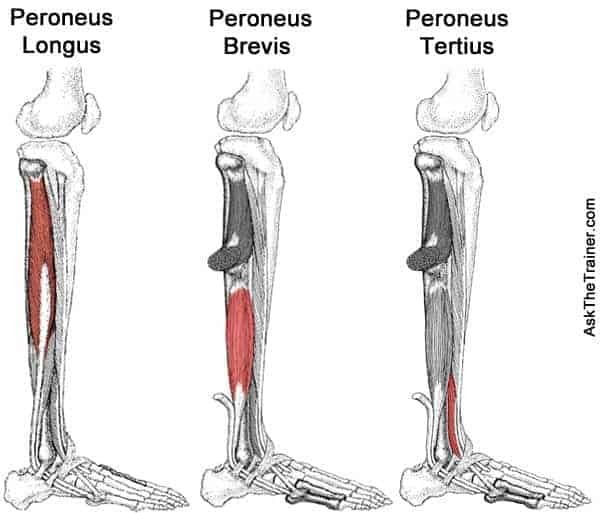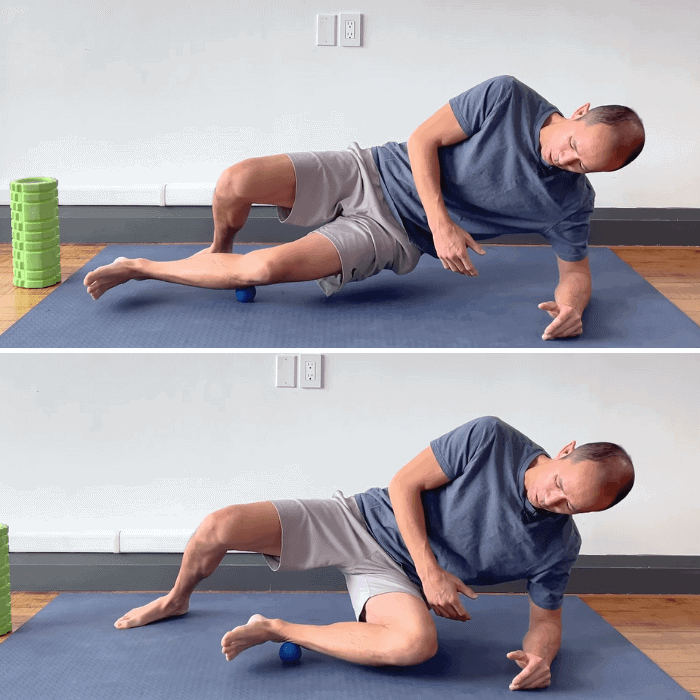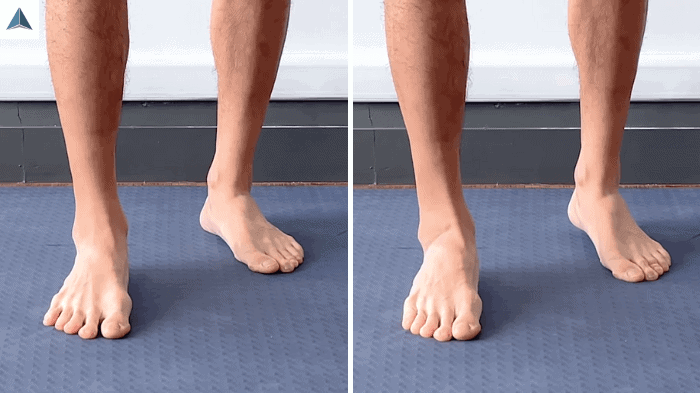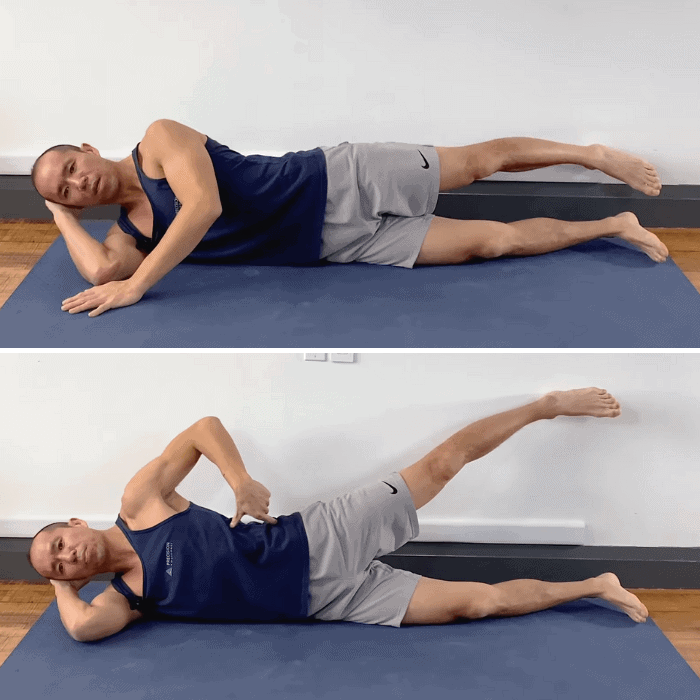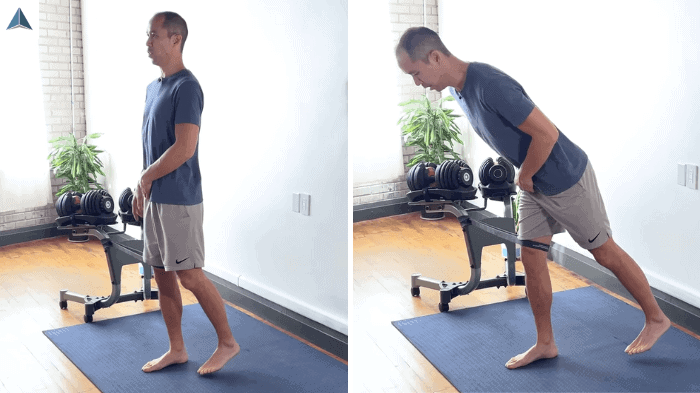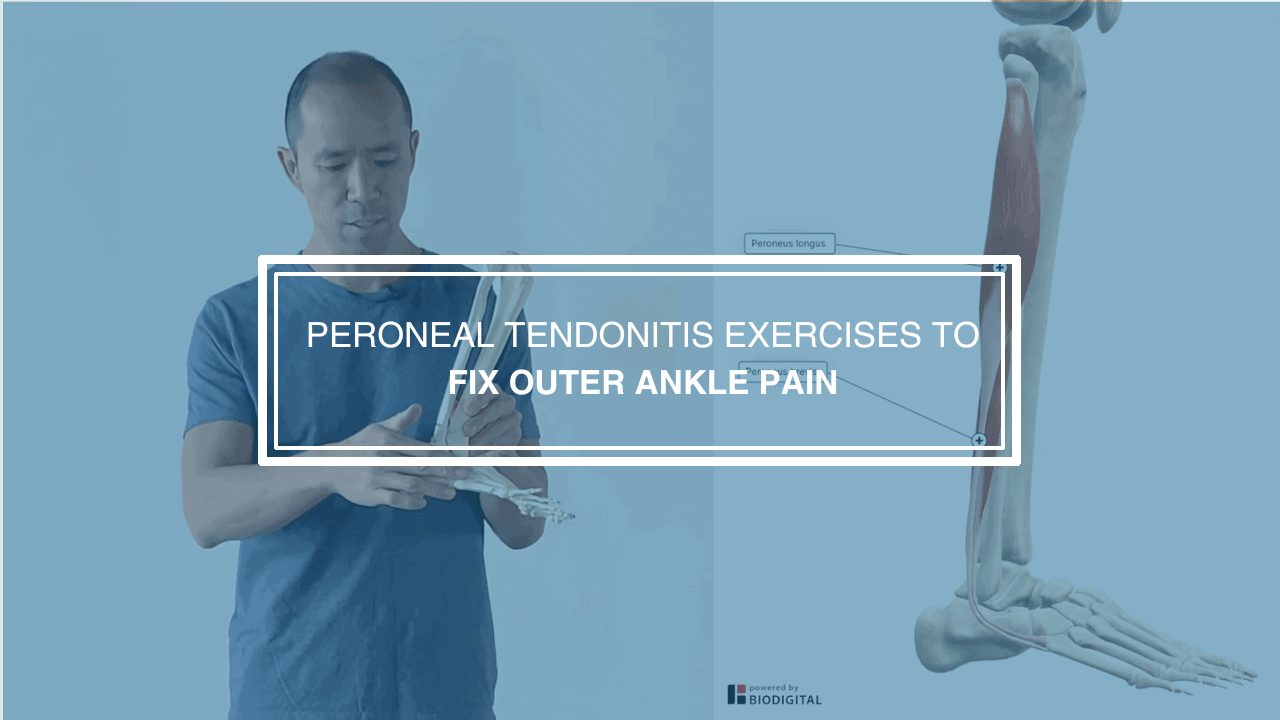
Peroneal tendonitis can be frustrating. If you’re dealing with pain outside of your ankle or soreness along the muscles on the side of your shin near the calf, you probably know just how limiting it can be.
The tricky part? Stretching and typical calf exercises won’t solve the problem.
The real solution is addressing the root causes of peroneal tendonitis, which can include past ankle sprains, hip instability, or even flat feet.
In this guide, I’m going to walk you through a step-by-step approach with exercises specifically designed to fix peroneal tendonitis, improve your outer ankle strength, and prevent pain from coming back.
By the end, you’ll know exactly what to do – not just what not to do.
Why Peroneal Tendonitis Happens
Peroneal tendonitis involves inflammation or irritation of the peroneus longus and peroneus brevis tendons, which run along the outside of the lower leg and ankle. These muscles perform eversion (turning the foot outward) to prevent ankle rolls and contribute weakly to plantarflexion (pointing the foot down).
When these muscles are weak, overworked, or improperly coordinated, tendonitis develops.
Common Root Causes:
- History of Lateral Ankle Sprains: If you’ve rolled your ankle before, the peroneals may not have fully recovered. Research shows peroneals respond rapidly to inversion stress and act as key lateral stabilizers during ankle perturbations [1]. Weak peroneals during activities like running or sudden lateral movements are quickly overworked, leading to tendonitis.
- Hip Instability: Poor single-leg hip stability shifts your center of mass outside your foot. The peroneals fire excessively to maintain balance, leading to overuse injuries. Strengthening the glute medius and outer hip muscles can correct this imbalance.
- Flat Feet / Weak Intrinsic Foot Muscles: When your arch is weak, the tibialis posterior compensates, elevating the arch. The peroneals counter this inversion. If the peroneals are weak relative to the tibialis posterior, they become overworked, resulting in tendonitis.
Addressing these root causes with a structured exercise routine is far more effective than stretching or calf raises alone. Studies on muscle activation patterns in ankle stabilization support the importance of hip and foot control in peroneal tendon function [1].
For more on foot mechanics, see how to correct overpronation.
5 Exercises to Fix Peroneal Tendonitis For GOOD
Here’s a five-step routine designed to target the root causes, not just provide temporary relief. Each exercise addresses one or more contributors to peroneal tendonitis: hypertonic muscles, weak peroneals, poor foot arch support, or hip instability. By performing them in order, you’ll build strength, coordination, and functional integration from your feet to your hips.
Exercise 1: ASMR: Peroneals
Use a massage ball or foam roller to roll along the outside of the shin and ankle. Avoid rolling directly over the fibula. Start at the muscle belly and roll down toward the tendon near the ankle. Bridging the foot slightly while rolling will engage the outer hip muscles, prepping them for later activation. Spend 1–2 minutes per side.
- Sit or lie so you can comfortably roll along the outer side of your shin down to your ankle.
- Avoid rolling directly on the bone.
- Apply gentle pressure and roll for 1–2 minutes, adjusting as tolerated.
- You can bridge your foot slightly to engage outer hip muscles while rolling.
Benefits: Reduces tension in the peroneals and primes the muscles for activation, improving both mobility and readiness.
Exercise 2: Plantarflexion + Inversion / Dorsiflexion + Eversion
Start in plantarflexion + inversion (toes pointed down and inward) and hold for 5 seconds. Then move into dorsiflexion + eversion (toes up and outward) and hold for 5 seconds. Keep your toes relaxed so the peroneals, not the foot flexors, do the work. Perform 1 set of 5 reps per side.
This exercise strengthens the peroneals through both shortening and lengthening, improving coordination and resilience – especially helpful for ankle sprain recovery and lateral ankle stability.
- Begin in plantarflexion + inversion (point toes down and inward). Hold 5 seconds.
- Move into dorsiflexion + eversion (lift toes up and outward). Hold 5 seconds.
- Keep toes relaxed to isolate the peroneals.
- Perform 1 set of 5 reps per foot.
Benefits: Builds peroneal strength and coordination across the full functional range, enhancing ankle resilience and reducing risk of lateral ankle sprains.
Exercise 3: Short & Skinny Foot
Place weight evenly across heel and forefoot. Spread toes, then pull the forefoot toward the heel (short) and narrow across the metatarsals (skinny). Hold for 10 seconds and relax. Perform 2 sets of 3 reps per foot.
This trains the deep intrinsic foot muscles to support the arch, improving functional balance and reducing reliance on the peroneals. Avoid curling toes excessively; focus on lifting and drawing the metatarsals toward the heel.
- Place weight evenly across heel and forefoot (metatarsals).
- Spread toes and actively pull the forefoot toward the heel (“short”), while narrowing across the metatarsals (“skinny”).
- Hold for 10 seconds and relax.
- Perform 2 sets of 3 reps per foot.
Benefits: Activates intrinsic foot muscles to support the arch and reduce peroneal overuse.
Exercise 4: Side-Lying Hip Extension
Lie on your side, top leg straight, heel pressing gently against the wall. Lift leg while engaging glute max, avoiding side bending. Hold 5 seconds at the top and lower slowly. Perform 2 sets of 2 reps per side.
This strengthens the glute medius and outer hip muscles, preventing lateral hip shift during single-leg stance, which reduces peroneal overuse. Engaging these muscles also minimizes TFL dominance.
- Lie on your side, top leg straight, about 6–8 inches from a wall.
- Press your heel into the wall to activate glute maximus.
- Slowly lift your leg, hold 5 seconds, lower with control.
- Perform 2 sets of 2 reps per side.
Benefits: Enhances hip stability, decreasing load on peroneals during daily and athletic movements.
Exercise 5: Midline Hinge
Anchor a resistance band at knee height. Step into it with light tension. Activate short and skinny foot and maintain an active arch. Hinge forward on one leg, keeping the hip stable. Optionally, lightly touch the non-working foot for balance. Perform 2 sets of 5 reps per leg.
This functional exercise integrates intrinsic foot, peroneal, and hip stabilizer muscles, transferring improvements to walking, running, and sports. Focus on maintaining posture and balance.
- Anchor a resistance band at knee height. Step into the band for light tension.
- Activate short and skinny foot, maintain an active arch.
- Hinge forward on one leg without letting the hip shoot out.
- Option: Keep the non-working foot lightly touching the ground for balance.
- Perform 2 sets of 5 reps per leg.
Benefits: Integrates foot and hip muscles for functional balance and dynamic stability.
Routine Summary and Next Steps
Perform this routine 2–3 times per week, progressively increasing hold times, reps, or light resistance as your strength and balance improve. Focus on slow, controlled movements and proper alignment.
| EXERCISE | SETS X REPS – HOLD |
|---|---|
| ASMR: Peroneals | 1-2 min |
| Plantarflexion + Inversion / Dorsiflexion + Eversion | 1 set x 5 reps – 5 sec hold |
| Short & Skinny Foot | 2 sets x 3 reps – 10 sec hold |
| Side-Lying Hip Extension | 2 sets x 4 reps – 5 sec hold |
| Midline Hinge | 2 sets x 5 reps |
Build from where you are. Add reps, hold a little longer, or bring in light resistance – but only if you can stay smooth and controlled. The goal isn’t to power through; it’s to teach your ankle how to stabilize under pressure.
Pay attention to the small wins. Better balance, stronger arch support, and less “wobble” when you move are signs the work is paying off. These are the foundations that keep your ankle resilient, not just pain-free.
Make this a regular part of your warm-up or recovery. Consistency beats intensity when it comes to retraining weak links.
When you’re ready to go deeper, the Foot & Ankle Pain Solution walks you through the full chain – from toes to hips – step by step. And if you want more strategies specific to this issue, check out the guide on Peroneal Tendonitis Treatment.
Key Takeaways
- Peroneal tendonitis often arises from weak peroneals, poor hip stability, or flat feet.
- Stretching alone is insufficient; strengthening and functional integration are key.
- Start with self-myofascial release to prep muscles.
- Strengthen intrinsic foot and hip muscles to reduce peroneal overuse.
- Progress to functional exercises like the midline hinge for long-term recovery.

